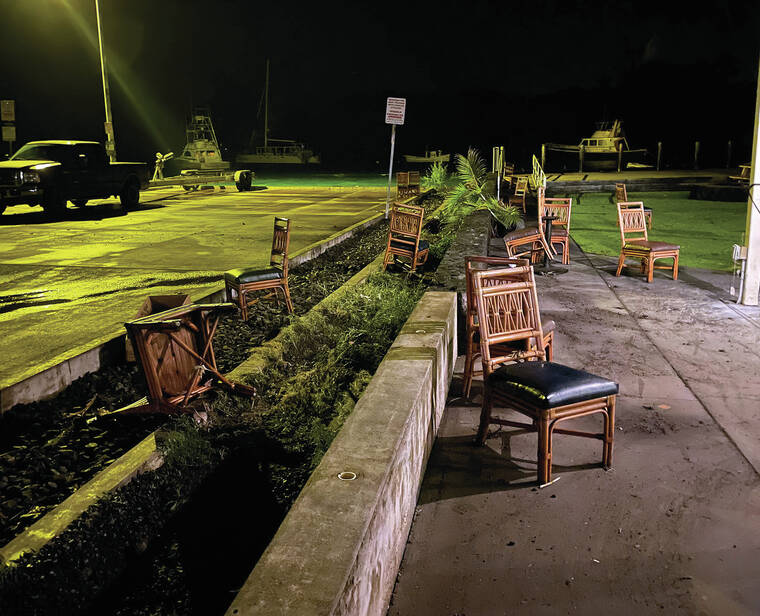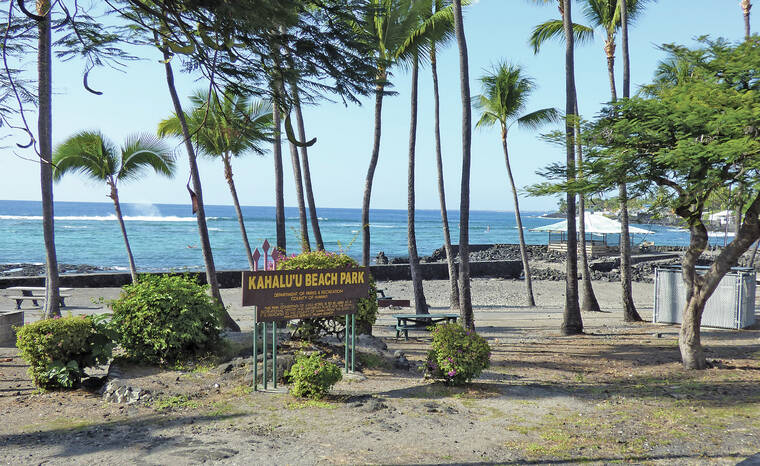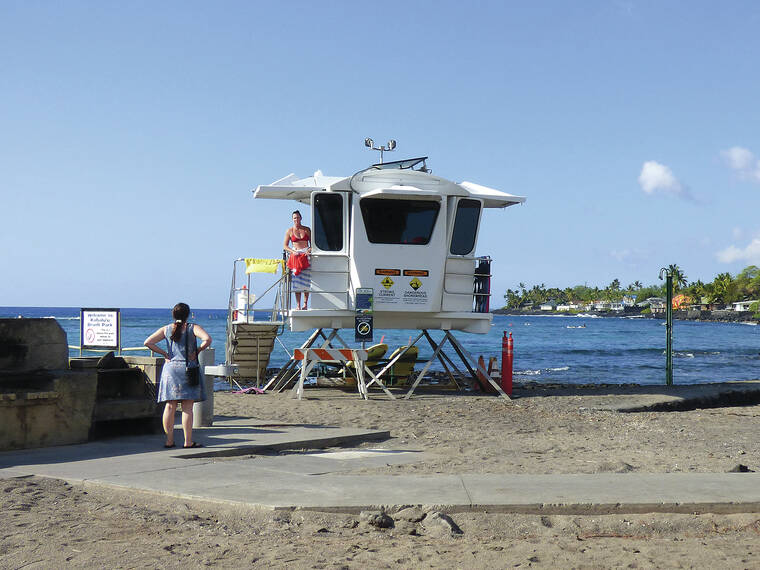The Big Island may have escaped major damage Saturday when a tsunami triggered by a volcanic eruption in Tonga reached Hawaii, but the event should serve as a reminder for newcomers and residents alike to be prepared for natural disasters.
One to 3-foot waves from the undersea eruption of Hunga-Tong-Hunga-Ha’apai volcano, located some 3,100 miles southeast of the Big Island, reached Hawaiian shores around 2 a.m. Saturday, surprising many in West Hawaii who were unaware of the threat despite an advisory having been issued. The tsunami damaged several businesses, as well as Kahaluu Beach Park, however, no casualties were reported.
“It pretty much went according to the way plans are laid out,” Talmadge Magno, administrator of Hawaii County Civil Defense, said Monday. “The PTWC does acknowledge that this was a different type of event, though I will leave that up to them because it delves into the science part of monitoring.”
Dave Snider, tsunami warning coordinator for the National Tsunami Warning Center (NTWC) in Palmer, Alaska, told The Associated Press the waves slamming ashore in Hawaii during Saturday’s wee hours were just under the criteria for a more serious tsunami warning. The Pacific Tsunami Warning Center (PTWC) and NTWC are both operated by NOAA.
“The important thing here is the first wave may not be the largest. We could see this play out for several hours,” he said early Saturday as the incident unfolded. “It looks like everything will stay below the warning level, but it’s difficult to predict because this is a volcanic eruption, and we’re set up to measure earthquake or seismic-driven sea waves.”
The first information statement for Hawaii came shortly after 10 p.m. Friday by the Pacific Tsunami Warning Center, about four hours after the eruption in Tonga. The statement said there was no threat to Hawaii, though a tsunami had been generated by the eruption, but was only a threat to areas closer to Tonga.
A couple hours later, just after midnight Saturday, a tsunami advisory was issued for Hawaii, telling people to move away from the coastline and to pay attention to instructions from local emergency management officials.
“As the night progressed, (the center) saw a little bit more anomalies that led them to believe something was occurring, so around midnight time, state emergency management, along with PTWC, activated all the EOCs in all the counties and the state EOC,” said Magno.
About 90 minutes later, around 1:30 a.m., Hawaii County Civil Defense sent first responders to monitor areas typically impacted by tsunami, such as along Alii Drive and Hilo Bay, and issued a message to the community about the advisory via the EverBridge notification system.
The tsunami did not trigger a warning or evacuation in Hawaii County because wave heights were forecast and remained under 1 meter, or 3 feet, when they arrived, Magno said. A tsunami advisory is one level below a warning — and one step above a watch. It means waves of 1 to 3 feet and strong currents are forecast, though significant inundation is not expected.
“At the advisory level, we don’t push out any sirens because we’re not going to evacuate,” Magno said. “The siren creates a lot of panic as well, so we have to be really careful with that. It’s a fine line.”
If a tsunami warning is issued, it will be broadcast on local radio and television, wireless emergency alerts, NOAA Weather Radio and NOAA websites. They may also come through outdoor sirens, local officials, text message alerts, and telephone notifications.
The advisory level event should serve as a wake-up call and reminder for all on the island — whether one is a visitor, malahini or kamaaina — to have the tools to keep informed as well as plans in place in the event an evacuation is issued such as occurred March 11, 2011, when a tsunami generated by a magnitude-9.1 earthquake off Japan resulted in extensive damage across West Hawaii.
A localized earthquake or eruption could result in a tsunami hitting Big Island shores within minutes, leaving no time for government agencies to warn the public.
“The thing about it is that volcano is still active and once we see this side of it, I’m not sure how it could reoccur but that should definitely be a light bulb for all of us,” Magno said.
Magno encouraged the public to sign up with the Hawaii County Alerts and Notifications System, which is powered by EverBridge, at https://member.everbridge.net/index/371914103062563#/signup and the police department’s alert system, Nixle at https://local.nixle.com/county/hi/hawaii/.
Magno also encouraged people to familiarize themselves with disaster preparedness, particularly amid the ongoing COVID-19 pandemic that has made it difficult for Civil Defense and other agencies to disseminate the information due to fairs and other events being canceled.
For more information on emergency preparedness, visit https://www.hawaiicounty.gov/departments/civil-defense/emergency-preparedness. Tsunami-specific information can also be found at https://www.weather.gov/hfo/tsunami_safety.
Email Chelsea Jensen at cjensen@westhawaiitoday.com.













